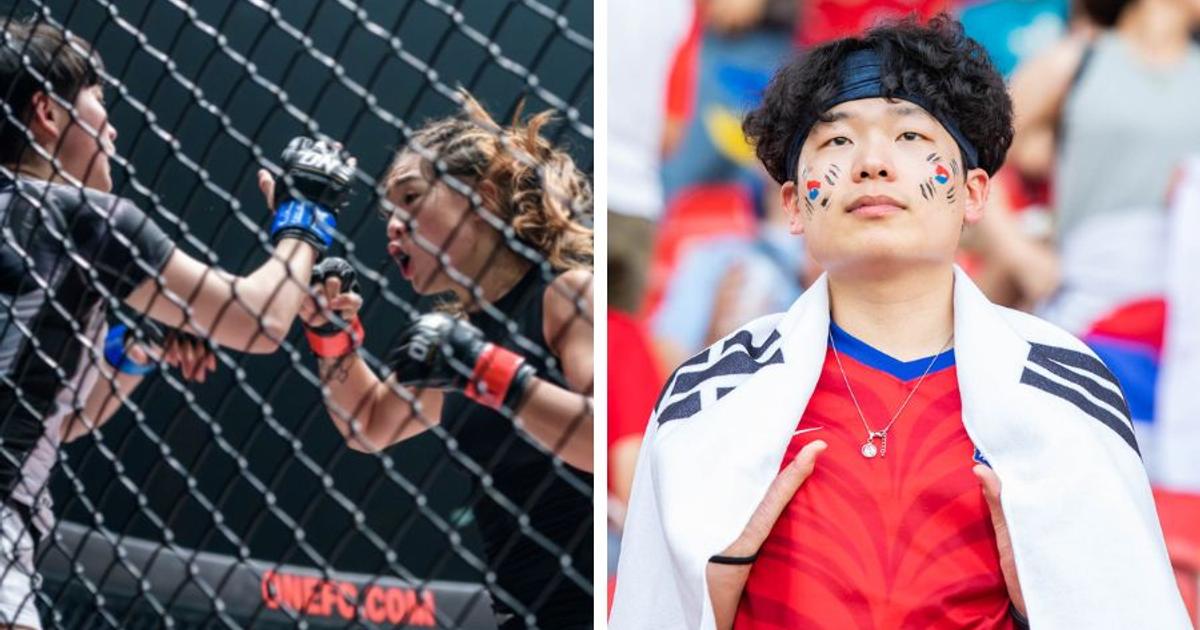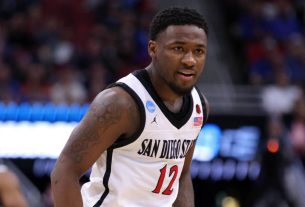The world of sports broadcasting is experiencing a seismic shift as streaming platforms increasingly spend billions of dollars on live sports rights to attract and retain subscribers.
In 2023, Deloitte predicts that streaming platforms will spend over $6 billion on exclusive major sports rights in most major global markets. The amount of spending represents a significant proportion of all streaming providers’ total combined content spend, which was about $50 billion in 2021.
For example, Apple will spend at least $2.5 billion for the sole rights to stream every US Major League Soccer (MLS) game over the next 10 years via its Apple TV+ app.
In Asia Pacific, Viacom18 acquired the domestic digital rights to the Indian Premier League’s (IPL) cricket games in a five-year, $3 billion deal. In 2022, Singapore-based mixed martial arts property One Championship signed a partnership with Amazon Prime Video to allow Prime Video subscribers in the United States and Canada to access 12 exclusive annual live primetime events in the US.
The growth in expenditures on live sports content underscores the increasing interdependence between streaming providers and the most significant sports leagues.
In a previous interview with Campaign Asia-Pacific, Starhub said it uses streaming as an opportunity to create more innovative solutions because it goes far beyond just live transmission in a studio.
Ben Turner, head of sports content and partnerships at Sportradar, explains that broadcasters would roll in their expensive equipment to produce a match and distribute it exclusively to television stations in the old linear world.
This traditional way of working gave them much power over the content. However, in the current era of over-the-top (OTT) streaming, there is a shift towards embracing new OTT strategies.
For example, the K-League in Korea uses SportRadar’s OTT platform to provide free matches outside regions where they have yet to sell their rights, allowing them to connect with new and different audiences.
SportsRadar helps the league with its platform strategy, such as whether to charge for content. The question on platform strategy is an essential question for sports today as they try to figure out how to build their audience and connect with fans and sponsors.
“We have also recently launched a new platform for baseball in Australia, working with the Australian Baseball League (ABL),” Turner tells Campaign Asia-Pacific.
“This platform provides games on-demand for both the premier and second-tier leagues. Once you build this destination, it becomes a place where fans can see all types of content. First, fans want to watch content on their schedule and on their chosen device. The second reason is that this creates better opportunities for advertisers to target their ads to the right audience.”
Connecting with existing, new and different audiences across different platforms is what One Championship is looking for, says Tai Morshed, senior vice president of US strategy and operations and global digital partnerships at One Championship.
He points out that One started in Asia, where the first screen is digital for many, so streaming live events has always been part of its playbook.
“Partnering with a leading digital platform like Amazon Prime Video rather than a traditional broadcaster is natural. The Prime Video team is putting a lot of effort into live sports through media rights deals in the US, such as NFL’s Thursday Night Football, One and others,” Morshed tells Campaign Asia-Pacific.
“Having a like-minded US broadcaster who truly believes in streaming and digital content as the future allows us to experiment and attract fans of all ages to enjoy our events.”
Marie Donoghue, vice president of global sports video at Amazon, adds that Amazon witnessed “tremendous growth and engagement” among fans of One Championship on Prime Video.
“We are incredibly excited by the continued growth our One partnership represents, especially among fans looking for world-class competition and engaging stories across the breadth of disciplines uniquely offered by One Championship,” Donoghue explains to Campaign Asia-Pacific.
Opportunities for advertisers
In the linear world, broadcasters use metrics and assumptions to determine for advertisers who the audience was, where they came from, and how many people were watching.
With OTT now, advertisers have information and can target their fans. Sports organisations are also using social media as a complementary place for content, whether a live game, highlights or interviews.
“Social media can be used to cross-promote and drive traffic between the two. In addition, sports organisations are trying to use the OTT platform to re-capture the relationship with their fans, having lost some of them to social media,” Turner explains.
“Advertisers get plenty of information from social media, and now it’s about how to create OTT experiences that take that audience away and give them more. For example, we could sit down and watch the NFL at a bar where we are having lunch, but it doesn’t give us anything more. It just gives us the production. OTT platforms allow sports to put more information and data around the OTT experience.”
(L-R) Marie Donoghue, Tai Morshed and Ben Turner
For example, fans can watch the game while looking at the game’s stats in real time and see who scored the most points and received a red or yellow card. Fans can also switch to other games simultaneously to check what is happening and decide whether they want to change to other games.
“This personalisation and choice make fans more engaged. As an advertiser, if they know that there is an engaged fan they can promote today, they can create a much more targeted and specific campaign around that. Some exciting things are happening in this space, using AI and data-driven technology to create an experience that is not just an OTT platform but an advertising ecosystem around that OTT platform to be more relevant, engaging, and add value to the fan,’ says Turner.
“OTT was originally just a place where you could get your stream, but now it is in their home where we connect with our fans, put our sponsors, or put our advertising around that experience. So we can get the information we want, which is becoming a broader, more significant experience for that fan.”
Turner shares a real-life example of how the K-League wanted to promote an Indonesian player playing in the K-League 2 second-tier competition.
Through K League TV, the league could promote and distribute the content in the Indonesian market, where they did not have a broadcast deal. As a result, the K-League has gained a massive audience in the Indonesian market.
This single Indonesian player increased awareness of the K-League among fans in Indonesia. As fans have access to that content, it has created a new wealth of data and KPIs for the K-League to analyse from an advertising point of view.
The league knows where its audience comes from, how long they stay on the site, what devices they use, and what content they watch. They can use this information to build an understanding of their audience and capture a new audience before sharing it with advertisers.
“With the English Premier League, piracy or streaming down into all types of sites is a big challenge for advertisers. The K-League has adopted an OTT strategy by making the content accessible in a market where they might not have been able to do a traditional broadcast deal. By giving the fans what they want, they can better understand the audience,” Turner explains.
“The K-League can package that audience up and look at different ways to sell that content, whether to advertise directly on the OTT platform or to an Indonesian sponsor that comes on board with the K-League, for example. So the way we build our OTT platform is to include all of the data and KPIs out of the box.”
Turner adds: “We believe they are fundamental for an OTT platform in 2023. We want to empower sports with that information so that they can target advertisers who are best placed to support the league and engage with that audience.”
At One, Morshed says streaming offers advertisers that work with One access to highly engaged younger audiences at their most passionate moments.
“Even before our Prime Video partnership, we were already aware that our audience skews younger than most sports leagues, and we had that as an advantage. The footprint and reach provided by Prime Video for our live US primetime events now amplify that advantage, making it even more appealing and impactful for our advertisers,” explains Morshed.

Using audience targeting on OTT
In an OTT world, personalisation is twofold. First, it is about the personalisation of content. Users who log into an OTT platform want to see relevant content based on their preferences.
If they have previously watched a team, they want to see highlights from that team, so platforms have to use data to personalise the experience.
Contextual advertisements are also necessary. For example, if a fan is viewing from Indonesia, they will most likely want to see Indonesian sponsorships.
Turner explains it is not just about traditional ad networks but also about how OTT platforms can add more brand value to sponsors than through display ads.
“We use AI and metadata mechanisms to bring the most relevant sponsors to the forefront. Personalisation also includes the experience across multiple screens,” explains Turner.
“If I’m watching on my phone, iPad, or computer, I want a similar experience across all platforms, both from a fan and advertiser point of view. So the platform needs to know what I want to see and engage me with interactive features like polls and mini-games.”
A critical trend in sports is the significant growth of female sports participation and pro leagues, as well as the female sports consumer, notes Turner. He explains this is a massive opportunity for the region’s sports technology companies and advertisers over the next five years.
“Women’s participation in sports leads to a vast consumer market for clothing, shoes, and equipment, creating an even more fantastic opportunity for advertisers to commercialise in that space,” says Turner.
Morshed says One is still exploring how it can augment its sponsorship deals and commitments with programmatic offerings with Prime Video and our other broadcasters.
However, he cautions it is still very early days, and One needs to experiment over the next few years to learn and discover what solutions will add the most value. For example, over time, Prime Video will have lots of data about what customers are currently browsing and shopping for and what they are streaming to watch.
“Suppose a customer happens to be a Muay Thai fan who streams events from One. In that case, this creates a unique opportunity to programmatically deliver a sponsor to that fan for Muay Thai gloves or muscle massagers, for example,” explains Morshed.
“In the meantime, traditional advertising opportunities remain – both in and out of the circle – and we are open to exploring all avenues.”
Will more sports properties launch their own OTT platforms?
Sports properties are contemplating whether to charge a subscription fee for their content on OTT platforms. However, each sport is at a different stage of its maturity curve.
For example, the NBA, Premier League, and NFL are advanced and can charge a subscription fee because they are popular.
Less mature leagues such as K-League and ABL have to consider what they want their fan experience to be. Some leagues are transitioning from traditional broadcast deals to owning and controlling more content. Others come from a free social environment and want to engage more with their fans.
The first question these leagues will ask is whether or not to put a subscription on top of their content, but the answer will depend on the league’s stage of maturity. If a league can create high-quality content that engages its fan base, that is not just live but also includes highlights, interviews, and behind-the-scenes action.
They can create a bigger audience and a more excellent distribution model. Creating a free model for this type of content can lead to new revenue opportunities. They can use the information they gather about their fans to connect with sponsors and advertisers.
“For sports, it is not just about the platform’s revenue in the digital world but also about growing the brand and increasing viewership. An excellent way to do this is by taking ownership of their broadcast and distribution model and brand; an OTT platform is an excellent tool for this purpose. One way to do this is by making archive footage available and creating classic matches for the OTT platform,” explains Turner.
“When a league owns its content and targets markets, it can create and highlight shows and create special programs. By doing this, they can create an audience and validate this data quickly through metrics and data.”
He adds: “This data can be used to sell advertising and sponsorship on the OTT platform, and it can also be used to communicate the league’s reach from an in-venue perspective and its online reach. So OTT platforms are not just a direct way to commercialise sports; they are also a way to build brands and audiences and commercialise in other ways.”



